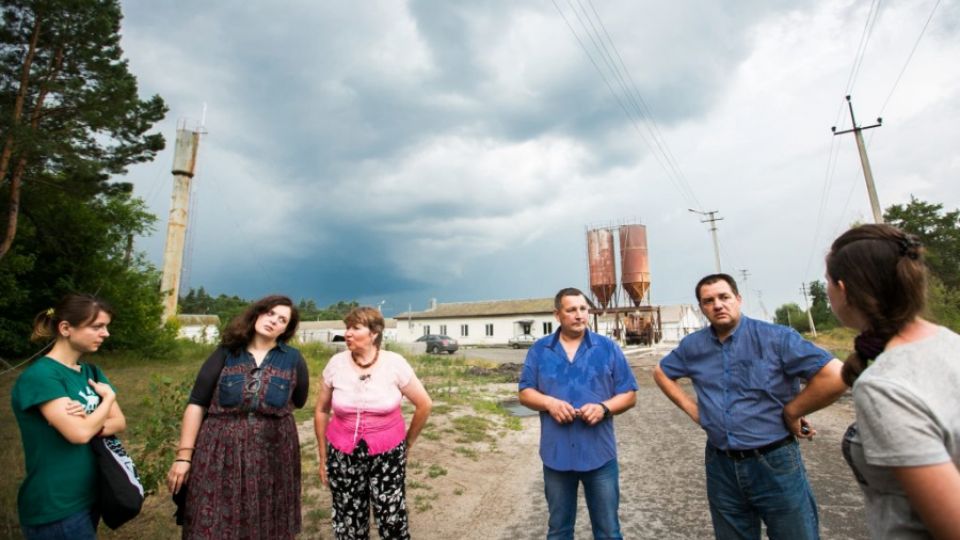Across Europe, the number of deaths caused by air pollution has steadily declined in recent decades. And yet air pollution levels, especially in cities, are still dangerously high (1, 2). Ukrainian oblasts got a new instrument in 2019 to protect their inhabitants, following the EU model. How the regional air pollution management plans are being prepared and the main obstacles behind them form the subject of a new study (3), published by the Clean Air for Ukraine Project (4). The authors urge an improvement of air pollution monitoring and the involvement of the public, including universities, in drafting regional strategies (5).
“Lack of information is a major barrier in searching for a solution to the pollution in Ukraine,” says the lead author of the study and expert of the Dnipro State Environmental Monitoring Centre Oleksiy Angurets. “The majority of the regions do not have modern air quality monitoring systems based on current technologies. If monitoring exists, the data is usually not publicly available,” he explains.
The Environmental Monitoring Centre of Olexiy Angurets in Dnipro is mentioned as an example of good practice. With an annual budget of about 3M UAH, the Centre operates a network of 15 stationary monitoring stations and publishes all information online. In 2019, they purchased a modern monitoring vehicle and carry out high-precision measurements in more distant or problematic spots.
The study analyses the situation in five regions, Kyiv, Dnipropetrovsk, Kharkiv, Zaporizhia, and Donetsk, that cover the industrial “zones” and “agglomerations” representing the most polluted areas of the country requiring special attention.
“The situation in the oblasts depends to a large extent on how high priority pollution is for their political representation. While in the Kharkiv region they have not even begun to prepare an air protection plan, in Dnipropetrovsk or Zaporizhia, the plans are virtually complete. It is too early to assess their quality, but where the oblast is ready to involve experts, universities, and non-governmental organizations, the measures are more sophisticated and realistic,” says Martin Skalsky, head of the Czech NGO Arnika.
The authors of the study point out that public involvement in the discussion of regional plans is insufficient. For example, in the Dnipropetrovsk region, there is only one citizen among the members of the commission set up to deal with air pollution. In the Kyiv region, the public was not allowed to join the commission at all, while in Zaporizhia a fifth of the members of the commission is formed of representatives of the public. Similarly, there are large differences in the organization of public hearings, where people should be able to comment on the objectives and tools of regional plans.
Remarks and details:
(1) In September 2021, the United Nations World Health Organization released new air quality guidelines that provide clear evidence of the harm that polluted air causes to human health, even in lower concentrations than previously thought. According to WHO experts, air pollution causes up to 7 million premature deaths each year and leads to the loss of millions of healthy years of life. Full publication: https://apps.who.int/iris/handle/10665/345329
(2) Thanks to better air quality, around 60,000 fewer people died prematurely as a result of fine particulate matter pollution in 2018, compared with 2009 in the EU. For nitrogen dioxide, the reduction is even greater as premature deaths have declined by about 54% over the last decade. The continuing implementation of environmental and climate policies across Europe is a key factor behind the improvements (European Environmental Agency, November 2020). More: https://www.eea.europa.eu/highlights/marked-improvement-in-europes-air
(3) The full study “Atmospheric air quality management: from concept to implementation” (in Ukrainian) is available to download here: https://cleanair.org.ua/publication/upravlinnya-yakistyu-atmosfernoho-povitrya/
(4) Clean Air for Ukraine - official website: https://cleanair.org.ua
(5) Main findings and recommendations of the study:
- Reliable air pollution monitoring systems must be established in all regions.
- Data on air pollution must be available online.
- The Resolution of the Government № 827 from 2019 should be updated to enable Regional Environmental Monitoring Centres to be established.
- Education and capacity building of the state authorities are necessary.
- The public must be involved in the regional Air Quality Committees.
- The expert potential of the universities and independent experts should be used.
- Public hearings must be organized and widely announced to discuss the Oblast Air Pollution Reduction Plans.
- The state authorities should cooperate with regional and local self-government bodies.
- Translation of the EU methodologies and guidelines could help to use existing experience.
- The state authorities should use the data produced by citizen science.
(6) Resolution 2019 № 827. Procedure for state monitoring in the field of air protection, approved by the Resolution of the Cabinet of Ministers of Ukraine dated August 14, 2019, № 827.
(7) Study “Air Pollution in Ukraine from space” (December 2020): https://cleanair.org.ua/en/publication/air-pollution-in-ukraine-from-space/
(8) Study “Industrial Ukraine: Impact of pollution on inhabitants and the environment in five industrial cities” (December 2018): https://cleanair.org.ua/en/publication/industrial-ukraine-impact-of-pollution-on-inhabitants-and-the-environment-in-five-industrial-cities/
(9) Study “The use of free-range poultry eggs as the indicator of the pollution in Eastern Ukraine” (December 2018): https://cleanair.org.ua/en/publication/the-use-of-free-range-poultry-eggs-as-the-indicator-of-the-pollution-in-eastern-ukraine/







